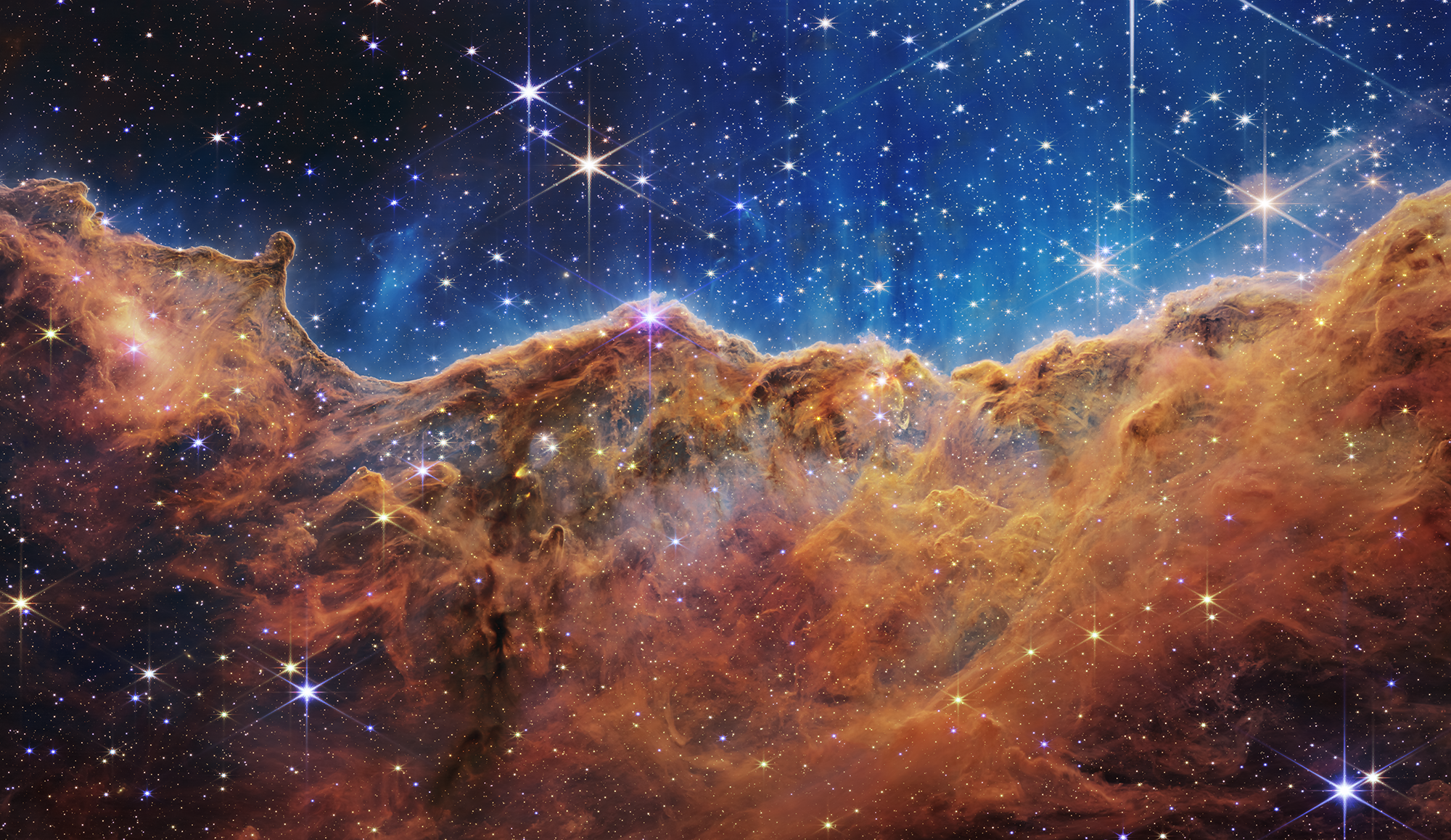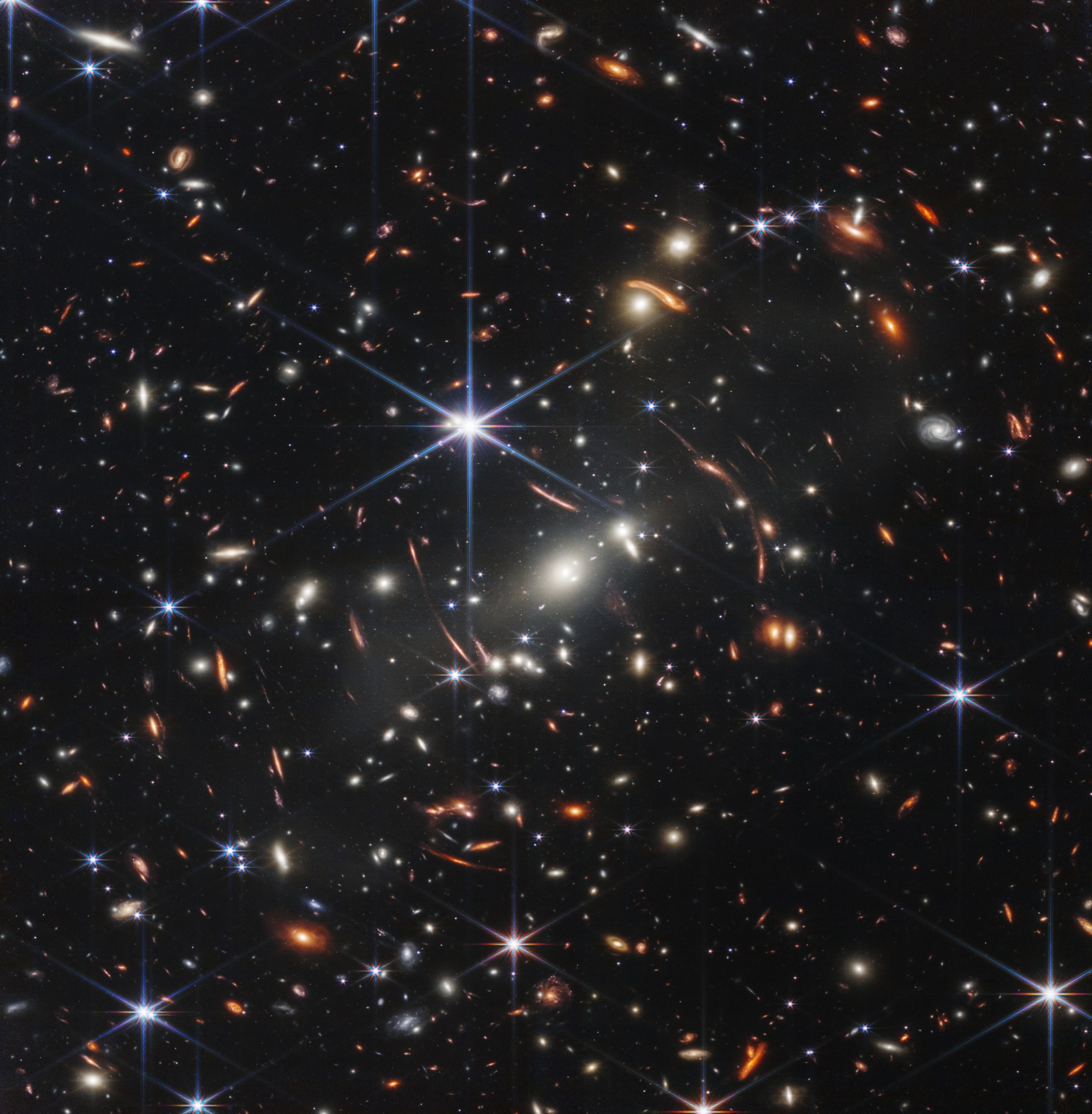One of those observations was a detailed study of the atmosphere of a gas giant planet 1,000 light years from Earth, called WASP-96 b. By watching the dip in light as the planet passed in front of its host star, JWST was able to probe the atmosphere of this world, a technique it will use to study many more planets in the future.
“You’re seeing bumps and wiggles that indicate the presence of water vapor in the atmosphere,” said Knicole Colón, an astrophysicist at NASA Goddard Space Flight Center and the James Webb Space Telescope deputy project scientist for exoplanet science, in a NASA event that revealed the observations.
“These are probably the most difficult observations that JWST will make,” says Don Pollacco, an astronomer at Warwick University in the UK. JWST is expected to have an unmatched ability to look for methane and other potential signatures of life in the atmospheres of planets similar in size to our own.
Instruments aboard JWST captured these two views of the Southern Ring Nebula, which is approximately 2,500 light-years away.
NASA, ESA, CSA, STSCI
Also unveiled today was JWST’s view of a dying star throwing off its outer layers, a so-called planetary nebula known as the Southern Ring Nebula that sits some 2,500 light-years from Earth. The view is far more detailed than an image taken by the Hubble Space Telescope in 1998 and reveals for the first time the two stars known to be at the heart of the nebula.
Another image (shown at the top of this story) reveals an exquisite view of Stephan’s Quintet, a group of five galaxies about 300 million light-years from Earth. Four of these galaxies are interacting, transferring gas and dust between them. JWST’s view of the galaxies in infrared light shows as never before how those interactions are driving the formation of stars inside the galaxies. The power of JWST’s optics are so great that individual stars can even be seen inside the galaxies. “It’s remarkable,” said Mark McCaughrean, senior advisor for science and exploration at the European Space Agency. “We’re ready to turn this telescope up to 11.”
 The edge of a star-forming region in the Carina Nebula, as captured by JWST.
The edge of a star-forming region in the Carina Nebula, as captured by JWST.
NASA, ESA, CSA, STSCI
The final image on offer was a fresh look at the Carina Nebula, a region of active star formation nearly 8,000 light-years from Earth. The magnificent vista unveiled by JWST reveals hundreds of new stars never seen before, and even structures in the dust and gas of the nebula that can’t yet be explained, according to Amber Straughn, an astrophysicist at NASA Goddard and deputy project scientist for the JWST.
Thanks to JWST, “we’re able to see so much more detail,” says Straughn. “It really does reveal what’s going on here.”
 This JWST “deep field” image, replete with galaxies, was unveiled on Monday by President Biden.
This JWST “deep field” image, replete with galaxies, was unveiled on Monday by President Biden.
NASA, ESA, CSA, AND STSCI
These images are just a tantalizing morsel of what is to come from JWST. The telescope has now begun its first year of scheduled scientific observations. Countless more stunning vistas and copious amounts of invaluable data are set to come our way.
“It is a new window into the history of our universe,” President Biden said yesterday. “We’re getting a glimpse of the first light to shine through that window.”
